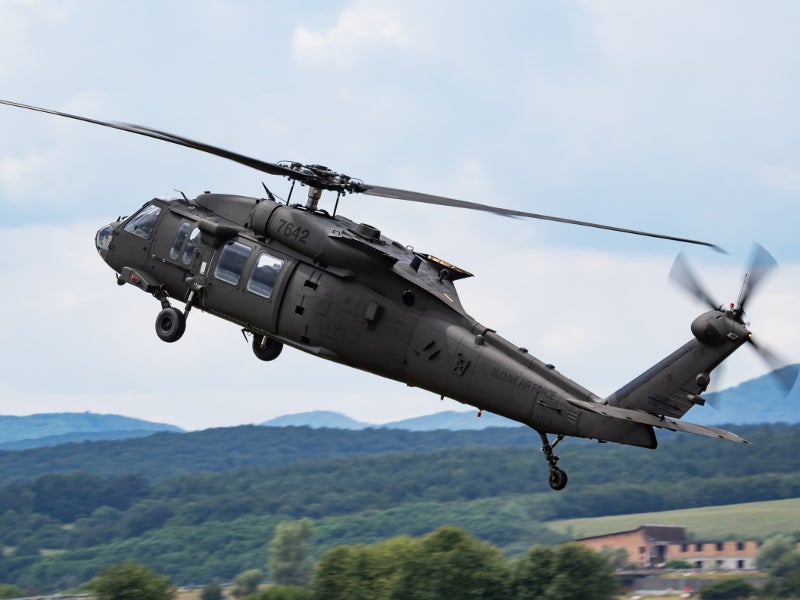UH 60 Helicopter Maintenance: A Comprehensive Overview for Pilots
UH 60 Helicopter Maintenance: A Comprehensive Overview for Pilots
Blog Article
Navigating Uh 60 Helicopter Regulations and Compliance Requirements

Regulatory Framework Summary
The regulatory framework controling UH-60 helicopter procedures includes a complicated set of criteria and regulations developed by aviation authorities. These regulations are made to make certain the efficient and secure procedure of UH-60 helicopters in different environments. The Federal Aeronautics Management (FAA) plays a central duty in developing and imposing these regulations, which cover a vast array of operational facets, including airworthiness standards, pilot credentials, maintenance requirements, and functional procedures.
Conformity with these guidelines is important for helicopter drivers to preserve the highest degree of safety and functional integrity. Failing to adhere to these laws can lead to significant repercussions, consisting of mishaps, injuries, and governing assents. Therefore, helicopter operators should remain informed concerning the most recent governing developments and make certain that their operations remain in full conformity with all applicable policies and standards.
Airworthiness Regulations and Examinations
Among the regulatory framework governing UH-60 helicopter operations, a crucial focus rests on compliance with Airworthiness Directives and carrying out complete examinations to promote safety and security criteria and functional integrity. Airworthiness Instructions (Advertisements) are provided by air travel authorities to attend to dangerous problems in aircraft, including the UH-60 helicopter, and mandate specific activities to be taken by drivers or proprietors. Compliance with Advertisements is required, and failing to follow these regulations can result in serious consequences, consisting of grounding of the airplane.
Regular examinations are critical to making certain the airworthiness of UH-60 helicopters. By adhering to a rigorous evaluation routine, operators can find and address prospective concerns quickly, therefore enhancing the security and integrity of UH-60 helicopter operations.
Pilot Certifications and Training

Pilot training for UH-60 helicopters is comprehensive and covers a wide variety of subjects, including airplane systems, emergency treatments, navigation, and mission-specific training. In addition, pilots undergo simulator training to exercise various emergency situation scenarios in a regulated environment. This training assists pilots create the required abilities to deal with tough situations properly.


Additionally, ongoing training and professional development are crucial for UH-60 pilots to remain present with the most up to date guidelines, innovation, and best techniques. By buying pilot certifications and training, operators can boost safety and security, enhance performance, and ensure conformity with regulative requirements in the procedure of UH-60 helicopters.
Operational Limitations and Requirements
Pilot credentials and training act as the foundation for recognizing the functional limitations and needs connected with UH-60 helicopter operations (uh 60). These functional limitations are established to guarantee the safety and security of the team, passengers, and the airplane itself. Operational constraints may consist of elements such as weather, weight restrictions, elevation constraints, and functional boundaries. It is vital for pilots to be well-versed in these constraints to make weblink educated choices during trip operations. Furthermore, conformity demands, such as sticking to particular trip paths, communication methods, and emergency treatments, are essential for preserving functional security and governing compliance. Pilots should remain current with all operational constraints and requirements with normal training, briefings, and evaluates to minimize risks and make sure effective and risk-free UH-60 helicopter procedures. By prioritizing adherence to these operational standards, pilots can boost the overall safety and efficiency of their missions while promoting regulatory requirements.
Emergency Situation Treatments and Conformity Screening
Efficient emergency procedures and comprehensive compliance screening are critical parts of keeping functional security and regulative adherence in UH-60 helicopter operations. Emergency treatments incorporate procedures for various scenarios, consisting of engine failings, fires, hydraulic problems, and more. Pilots and staff participants should be well-versed in these treatments to respond swiftly and properly in emergency situations. Routine compliance screening makes sure that the helicopter meets all governing needs set forth by aviation authorities. This screening includes comprehensive inspections, checks, and analyses to verify that the airplane is airworthy and in conformity with all applicable laws.
Conformity screening likewise encompasses equipment onboard the UH-60, such as interaction systems, navigation instruments, and safety and security gear. Guaranteeing that all tools is functioning appropriately and satisfies regulatory standards is important for safe procedures. Furthermore, compliance testing may entail simulations of emergency situations to analyze the crew's reaction and the helicopter's efficiency under tension. By focusing on emergency situation treatments and compliance testing, UH-60 operators can minimize threats and demonstrate their commitment to security and governing conformity.
Final Thought
In verdict, adherence to governing structure, conformity with airworthiness instructions, pilot credentials and training, functional constraints, and emergency situation treatments are necessary for browsing the laws and needs of running a UH-60 helicopter. uh 60. It is vital for drivers to prioritize security and guarantee full compliance with all applicable regulations to keep the airworthiness and functional stability of the aircraft
Navigating the regulatory landscape bordering UH-60 helicopter procedures demands click resources a nuanced understanding of the elaborate web of regulations and conformity demands.Compliance with these regulations is essential for helicopter drivers to preserve the greatest levels of safety and security and functional stability.Amidst the regulative framework governing UH-60 helicopter procedures, a critical emphasis lies on compliance with Airworthiness Directives and performing complete evaluations to support safety and security requirements and operational integrity.Efficient emergency treatments and comprehensive conformity testing are crucial parts of preserving functional security and governing adherence in UH-60 helicopter procedures. Regular conformity screening makes sure that the helicopter have a peek at these guys meets all regulative requirements established forth by aviation authorities.
Report this page